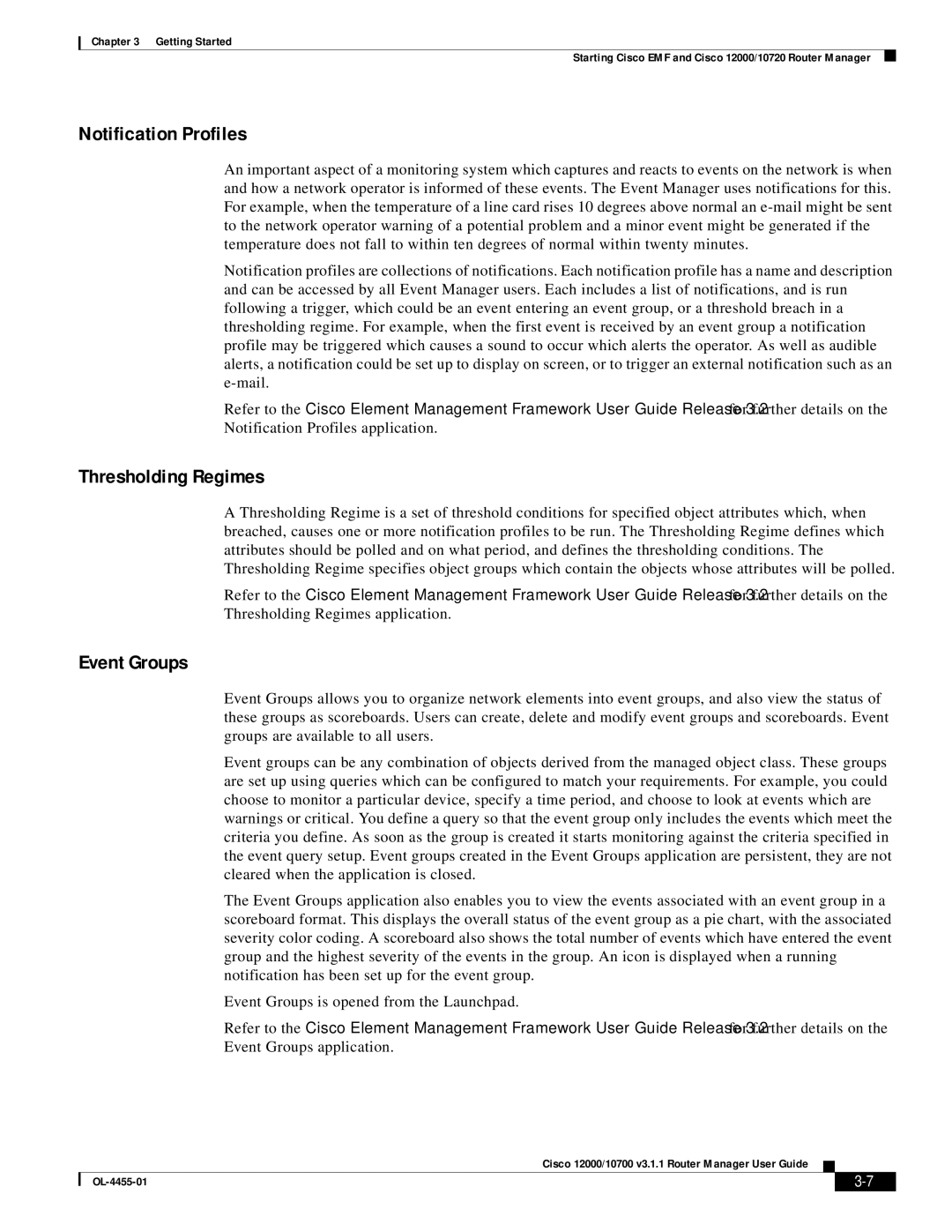
Chapter 3 Getting Started
Starting Cisco EMF and Cisco 12000/10720 Router Manager
Notification Profiles
An important aspect of a monitoring system which captures and reacts to events on the network is when and how a network operator is informed of these events. The Event Manager uses notifications for this. For example, when the temperature of a line card rises 10 degrees above normal an
Notification profiles are collections of notifications. Each notification profile has a name and description and can be accessed by all Event Manager users. Each includes a list of notifications, and is run following a trigger, which could be an event entering an event group, or a threshold breach in a thresholding regime. For example, when the first event is received by an event group a notification profile may be triggered which causes a sound to occur which alerts the operator. As well as audible alerts, a notification could be set up to display on screen, or to trigger an external notification such as an
Refer to the Cisco Element Management Framework User Guide Release 3.2 for further details on the Notification Profiles application.
Thresholding Regimes
A Thresholding Regime is a set of threshold conditions for specified object attributes which, when breached, causes one or more notification profiles to be run. The Thresholding Regime defines which attributes should be polled and on what period, and defines the thresholding conditions. The Thresholding Regime specifies object groups which contain the objects whose attributes will be polled.
Refer to the Cisco Element Management Framework User Guide Release 3.2 for further details on the Thresholding Regimes application.
Event Groups
Event Groups allows you to organize network elements into event groups, and also view the status of these groups as scoreboards. Users can create, delete and modify event groups and scoreboards. Event groups are available to all users.
Event groups can be any combination of objects derived from the managed object class. These groups are set up using queries which can be configured to match your requirements. For example, you could choose to monitor a particular device, specify a time period, and choose to look at events which are warnings or critical. You define a query so that the event group only includes the events which meet the criteria you define. As soon as the group is created it starts monitoring against the criteria specified in the event query setup. Event groups created in the Event Groups application are persistent, they are not cleared when the application is closed.
The Event Groups application also enables you to view the events associated with an event group in a scoreboard format. This displays the overall status of the event group as a pie chart, with the associated severity color coding. A scoreboard also shows the total number of events which have entered the event group and the highest severity of the events in the group. An icon is displayed when a running notification has been set up for the event group.
Event Groups is opened from the Launchpad.
Refer to the Cisco Element Management Framework User Guide Release 3.2 for further details on the Event Groups application.
Cisco 12000/10700 v3.1.1 Router Manager User Guide
|
| ||
|
|
